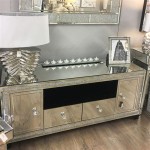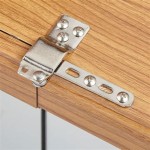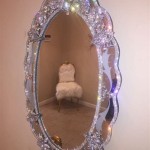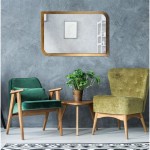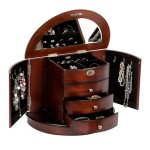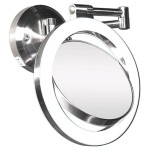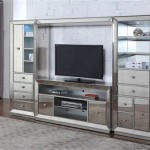Victorian Wall Mirrors: Reflecting an Era of Opulence and Craftsmanship
Victorian wall mirrors represent a significant decorative element of the Victorian era, spanning roughly from 1837 to 1901, the reign of Queen Victoria. These mirrors are not merely reflective surfaces; they are intricate works of art showcasing the stylistic trends, manufacturing capabilities, and social values of the time. Understanding the characteristics, materials, and evolution of Victorian wall mirrors provides valuable insight into the aesthetic sensibilities of the 19th century.
The Victorian era was characterized by rapid industrialization, economic growth, and a rising middle class seeking to emulate the lifestyles of the aristocracy. This aspiration led to a surge in demand for decorative items that exuded elegance and sophistication. Wall mirrors, previously considered luxury items, became more accessible and were incorporated into homes of varying social strata. The designs became increasingly elaborate, reflecting the Victorian penchant for ornamentation and detail.
Key Characteristics of Victorian Wall Mirrors
Victorian wall mirrors are readily identifiable due to several distinctive features that set them apart from mirrors of other periods. These include the types of frames used, the shapes of the mirrors themselves, and the decorative motifs that embellish them.
Elaborate Frames: The hallmark of a Victorian wall mirror is its ornate frame. These frames were typically constructed from wood, often mahogany, walnut, or gilded pine. The wood was often carved with great detail, featuring floral patterns, scrolls, geometric designs, and even depictions of mythical creatures. The gilding, using gold leaf or metallic paint, added a touch of opulence and reflected the ambient light, enhancing the mirror's presence in the room. In some instances, gesso, a plaster-like material, was applied to the frame before gilding to create raised patterns and further enhance the decorative effect. The frames were not simply functional supports; they were integral components of the mirror's overall aesthetic appeal.
Varied Shapes and Sizes: Victorian wall mirrors came in a wide range of shapes and sizes to suit different rooms and decorative purposes. Common shapes included rectangular, oval, arched, and circular. Larger mirrors were often used in hallways or above fireplaces to create a sense of spaciousness and grandeur, while smaller mirrors were placed in bedrooms or dressing rooms for personal grooming. Some mirrors were designed with pivoting mechanisms, allowing users to adjust the angle of reflection. The versatility of shapes and sizes ensured that Victorian wall mirrors could be seamlessly integrated into diverse interior design schemes.
Decorative Motifs and Embellishments: Victorian wall mirrors were frequently adorned with a variety of decorative motifs and embellishments. These included:
- Floral Carvings: Roses, lilies, and other flowers were common motifs, reflecting the Victorian era's fascination with nature and botany.
- Scrolls and Foliage: Intricate scrollwork and stylized foliage added a sense of elegance and sophistication to the frames.
- Gilt Accents: Gold leaf or metallic paint was used to highlight specific areas of the frame, creating visual interest and drawing attention to the details.
- Applied Ornaments: In some cases, small figurines, shells, or other decorative elements were attached to the frame, adding a three-dimensional element to the design.
- Eglomise: This technique involved painting or gilding a design onto the reverse side of the glass, creating a subtle and elegant effect. Eglomise was often used to create borders or panels within the mirror frame.
These decorative elements were meticulously crafted and contributed to the overall richness and visual appeal of Victorian wall mirrors.
Materials and Techniques Used in Manufacturing
The production of Victorian wall mirrors involved a combination of traditional craftsmanship and emerging industrial technologies. Understanding the materials and techniques employed provides valuable context for appreciating the artistry and skill involved.
Wood Selection and Carving: As mentioned previously, mahogany, walnut, and gilded pine were the most commonly used woods for Victorian mirror frames. These woods were chosen for their durability, workability, and aesthetic qualities. Skilled artisans used hand tools, such as chisels and gouges, to carve intricate designs into the wood. The level of detail and complexity varied depending on the quality and price of the mirror. Mass-produced mirrors might feature simpler, less detailed carvings, while higher-end mirrors would boast elaborate, hand-carved designs. The wood carving process required significant skill and patience, reflecting the high value placed on craftsmanship during the Victorian era.
Gilding and Finishing: Gilding was a crucial step in the creation of many Victorian mirror frames. This process involved applying thin sheets of gold leaf to the wood surface using a specialized adhesive. The surface was then burnished to create a smooth, lustrous finish. Alternatively, metallic paint could be used to simulate the look of gold leaf, providing a more affordable option. The finishing process also involved applying varnishes or lacquers to protect the wood and enhance its natural grain. The meticulous attention to detail in gilding and finishing contributed to the overall elegance and longevity of Victorian wall mirrors.
Mirror Glass Production: The production of mirror glass underwent significant advancements during the Victorian era. The development of new manufacturing techniques, such as the plate glass process, allowed for the creation of larger, clearer, and more uniform mirrors. This process involved pouring molten glass onto a large table and then grinding and polishing it to a perfectly smooth surface. The silvering process, which involved applying a thin layer of silver to the back of the glass to create a reflective surface, also improved during this period. The use of high-quality mirror glass was essential for creating a clear and accurate reflection, which was highly valued during the Victorian era.
Mass Production and Artisanry: While industrialization led to the mass production of some Victorian wall mirrors, artisanry continued to play a significant role. Many mirror frames were still hand-carved and finished by skilled craftsmen. The combination of mass production and artisanry allowed for a wider range of styles and price points, making Victorian wall mirrors accessible to a broader segment of the population. The tension between mass production and artisanry is a recurring theme in the study of Victorian decorative arts.
Evolution of Styles and Designs
Victorian wall mirror designs evolved throughout the era, reflecting changing tastes and influences. Understanding these stylistic shifts provides a deeper appreciation for the diversity and complexity of Victorian decorative arts.
Early Victorian (1837-1850s): Mirrors from this period often featured relatively restrained designs, reflecting the influence of Neoclassical and Regency styles. Frames were typically made of mahogany or rosewood and adorned with simple carvings or gilt accents. The shapes were often rectangular or oval, and the overall aesthetic was elegant and understated.
Mid-Victorian (1850s-1870s): This period saw a proliferation of more elaborate and ornate designs, reflecting the influence of Gothic Revival and Rococo Revival styles. Frames became more heavily carved, featuring floral patterns, scrolls, and other decorative motifs. Gilding became more prominent, and some mirrors were adorned with applied ornaments, such as ceramic plaques or small figurines. The use of Walnut became more popular. The aesthetic was opulent and extravagant, reflecting the Victorian era's growing prosperity and confidence.
Late Victorian (1870s-1901): Mirrors from this period often demonstrated a blend of styles, including Aesthetic Movement and Art Nouveau influences. Frames became more streamlined and less heavily carved, emphasizing clean lines and geometric patterns. The use of exotic woods, such as ebony and rosewood, became more common. The aesthetic was more refined and sophisticated, reflecting a shift away from the excessive ornamentation of the mid-Victorian era. While still ornate, the designs began to incorporate more naturalistic motifs and flowing lines, characteristics of the Art Nouveau movement.
The evolution of Victorian wall mirror designs reflects the broader cultural and artistic trends of the era, demonstrating the dynamic and ever-changing nature of Victorian decorative arts. By examining the stylistic shifts that occurred throughout the period, it is possible to gain a deeper understanding of the aesthetic sensibilities and social values of the time. These mirrors serve not only as reflectors of light and image, but also as reflections of the Victorian society that produced them.

French Victorian Mirror Wall Gilt Baroque Antique

Victorian Ornate Golden Wall Mirror Charmydecor

Very Large Victorian Gilt Full Height Wall Mirror 19th Century Floor Standing

Antique White Shabby Distress Painted Chic Rose Carved Victorian Wall Mirror For At 1stdibs Distressed

Wood Carved Acanthus Wall Mirror With Arched Top And Distressing Cream Olivia May Target

25x 16 Oval Vintage Decorative Victorian Wall

Late Victorian Wall Mirror 1890s For At Pamono

Victorian Oval Wall Mirror 1880 For At Pamono

Victorian Wall Mirrors On Bellacor

Eugenie Victorian Wall Mirror Urban Mood
